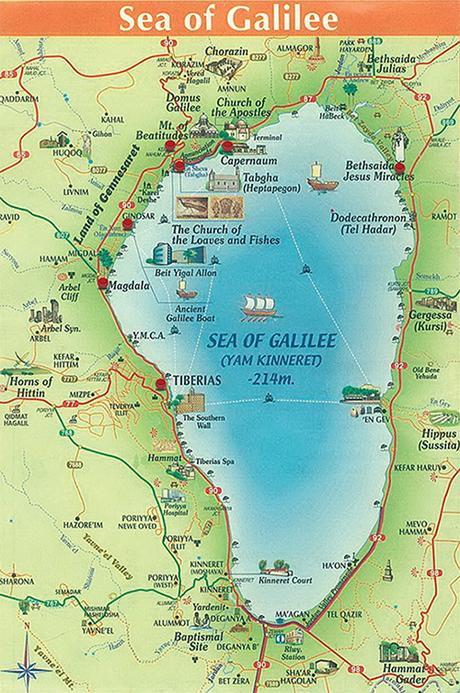Genesis 4:1-3 says: “And Adam knew Eve his wife; and she conceived, and bare Cain, and said, I have gotten a man from the Lord. And she again bare his brother Abel. And Abel was a keeper of sheep, but Cain was a tiller of the ground. And in process of time it came to pass, that Cain brought of the fruit of the ground an offering unto the Lord.”
Dr. Hugh Ross writes for Reasons to Believe, Sept. 10, 2015, that:
A continuing source of challenges to the Bible’s credibility and authority is the claim in Genesis 4 that the first humans were engaging in agriculture and soon thereafter even in metallurgy. Skeptics point out the complete lack of archeological evidence that humans previous to the Neolithic Revolution participated in any kind of agriculture or metalwork.
The Neolithic Era (néos is “new”; líthos is “stone”) or New Stone Age, the last part of the Stone Age, was a period in the development of humankind that first began about 10,200 BC in some parts of the Middle East (and later in other parts of the world), ending between 4,500 and 2,000 BC.
The Neolithic commenced with the beginning of farming, which produced the “Neolithic Revolution”. It ended when metal tools became widespread (in the Copper Age or Bronze Age; or, in some geographical regions, in the Iron Age). In other words, the Neolithic Revolution was the beginning of human civilization, enabled by farming and the domestication of animals, which led to villages, towns, specialized agriculture, the manufacturing of household goods, and trade.
Dr. Ross continues that, until a recent discovery, archeological and DNA evidence had placed the Neolithic Revolution in the Persian Gulf region and Mesopotamia about 12,000 years ago. But the biblical accounts of the Garden of Eden and Noah’s flood imply that humans were living in the Persian Gulf region during much of the last ice age. Antarctic and Greenland ice cores establish that the last ice age persisted from 12,000 to 120,000 years ago.

Now, a research team in Israel has found evidence that humans living along the shore of the Sea of Galilee 23,000 years ago were cultivating wild cereals, i.e., they were “tillers of the ground” 11,000 years before the beginning of the Neolithic Revolution.
The members of the research team are Ainit Snir, Dani Nadel, Iris Groman-Yaroslavski, Yoel Melamed, Marcelo Sternberg, Ofer Bar-Yosef, and Ehud Weiss.
Below is the abstract of Snir, et al.‘s article, “The Origin of Cultivation and Proto-Weeds: Long Before Neolithic Farming,” in the peer-reviewed journal Plos One (July 22, 2015):
Weeds are currently present in a wide range of ecosystems worldwide. Although the beginning of their evolution is largely unknown, researchers assumed that they developed in tandem with cultivation since the appearance of agricultural habitats some 12,000 years ago. These rapidly-evolving plants invaded the human disturbed areas and thrived in the new habitat. Here we present unprecedented new findings of the presence of “proto-weeds” and small-scale trial cultivation in Ohalo II, a 23,000-year-old hunter-gatherers’ sedentary camp on the shore of the Sea of Galilee, Israel. We examined the plant remains retrieved from the site (ca. 150,000 specimens), placing particular emphasis on the search for evidence of plant cultivation by Ohalo II people and the presence of weed species. The archaeobotanically-rich plant assemblage demonstrates extensive human gathering of over 140 plant species and food preparation by grinding wild wheat and barley. Among these, we identified 13 well-known current weeds mixed with numerous seeds of wild emmer, barley, and oat. This collection provides the earliest evidence of a human-disturbed environment—at least 11 millennia before the onset of agriculture—that provided the conditions for the development of “proto-weeds”, a prerequisite for weed evolution. Finally, we suggest that their presence indicates the earliest, small-scale attempt to cultivate wild cereals seen in the archaeological record.
Dr. Ross concludes:
The [Israeli] team’s discovery also answers the skeptics’ challenge to the credibility of claims in Genesis 4 about the technological achievements of the earliest humans. We now have evidence sustaining the compatibility of biblical and archeological data on the civilization achievements of early humans.
See also these other cases of the confluence of science and the Bible:
- New research on human hand proves humans did not evolve from chimps
- New research finds Earth’s core to be mostly sulphur, aka brimstone
- Wheels on the bottom of the Red Sea
- Geologists confirm Jesus crucified on Friday, April 3, 33 AD
- The Christmas Miracle: Scientific Evidence of the Virgin Birth
~Éowyn

